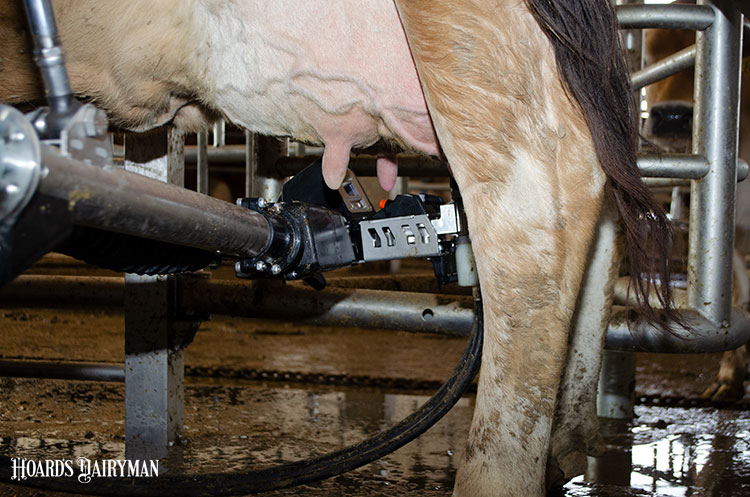
“We have been mechanically milking cows for over 100 years, but the first robotic attachment of a teat cup first occurred in 1985,” shared Kristy Campbell at the 61st National Mastitis Council (NMC) Meeting. “The first commercial Automated Milking System (AMS) was installed in 1992,” she went on to say at the early February gathering of the world’s top milk quality experts.
“In 2000, there were 800 AMS units worldwide,” the DeLaval staffer said to those attending the meeting from 16 countries. That also happened to be the same year the first two commercial AMS units were installed in the United States on Knigge Farms in Omro, Wis.
“By 2007, there were 8,000 AMS units in 22 countries,” she said noting that number quickly leapt to 10,000 units by 2010. “Today, we estimate that there are over 35,000 AMS units!”
And yet, we have much more to learn. “Despite this exponential growth of AMS in just our lifetime, robotic milking is still in its infancy,” noted Campbell.
“Narrowing our focus to milk quality, the technology that exists today can measure almost anything,” added Lely’s Steve Kraft, who shared the stage with Campbell. “Individual cow somatic cell count (SCC), milk temperature, and specific milk components can provide knowledge toward individual and herd udder health status,” he continued in discussing measures of milk quality.
“Sensors that monitor mechanical functions of AMS and peripheral equipment can alert producers to changes in performance that may influence udder health or bulk tank milk quality,” Kraft added. “Whether a farm has one AMS or 64 AMS units, the amount of data producers receive daily from an AMS is staggering.”
Producers receive information about individual cow performance that includes temperature, SCC, conductivity, presence of blood, components, hormone levels, flow rates, milking performance, kick-offs, incomplete milkings, milking durations, milking intervals, teat cleaning information, attachment information, feed dispensed or consumed . . . just to name a few. AMS owners also receive changes or deviations in cow performance. This data is available for every milking throughout a cow’s lactation.
“None of what has been mentioned thus far touches on the other aspects of operating a dairy,” Kraft pointed out. He then shared that AMS units aid in make decisions in the areas of reproduction, health, nutrition and feeding, animal welfare, and even employee, cropping, and manure management.
“Manufacturers will continue to invest, develop ,and install new technologies, and our focus will be to allow technology and information to be easily adopted and utilized at the farm level,” concluded Kraft.








